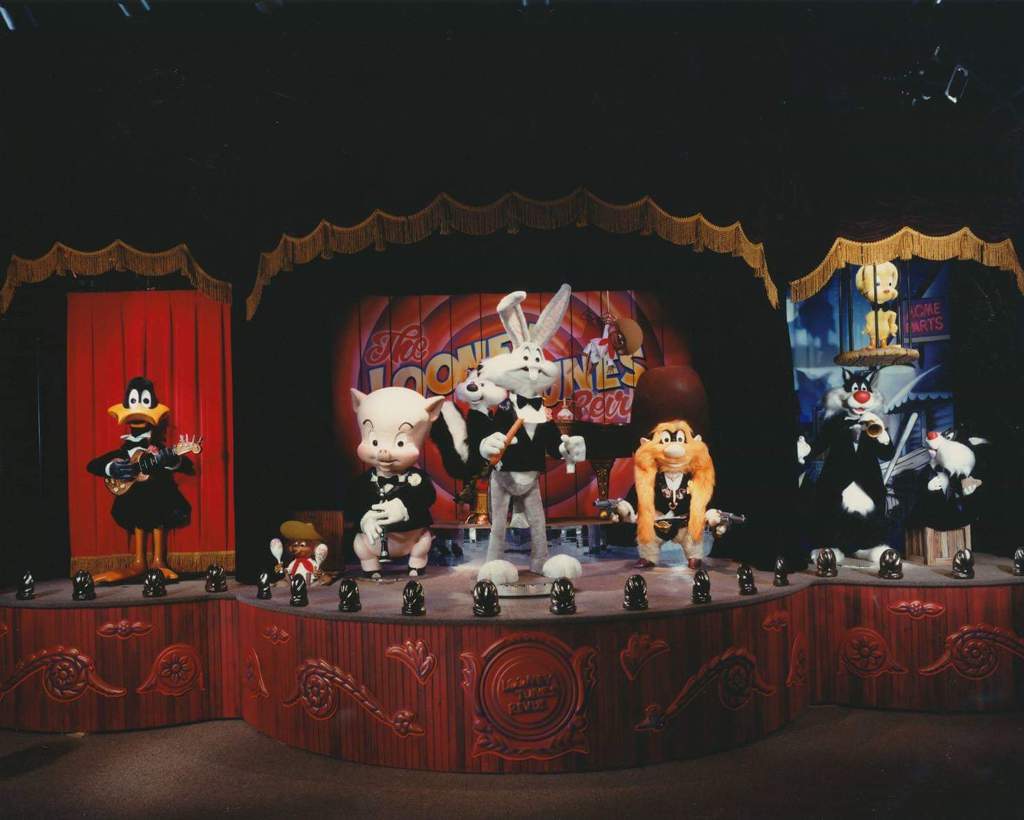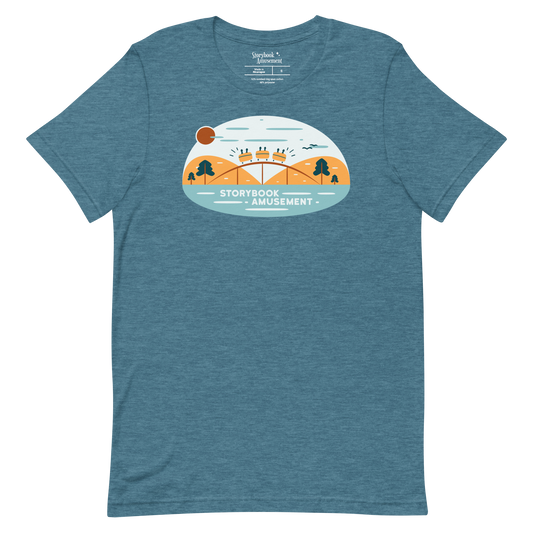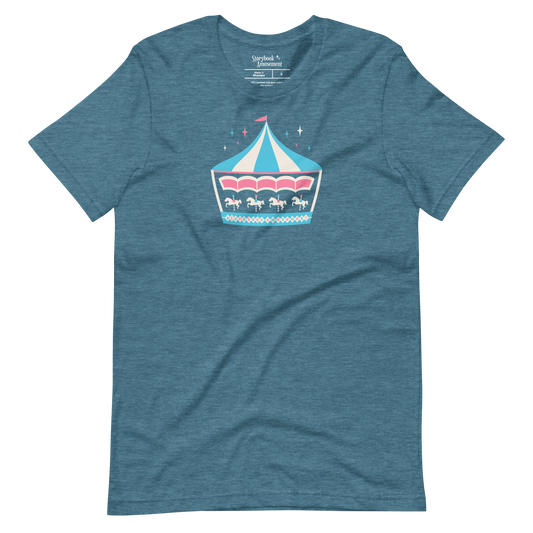Themed Dining in the US
Themed dining made its mark on American culture in the early 20th century with restaurants such as Hollywood’s Brown Derby. By the 1930s and into the ensuing decades, tiki bars swelled in popularity with cantinas popping up in cities across the U.S., proving to be a hit. The themed entertainment industry was just getting started.Watch on YouTube
This article is available in video form with visuals and sound clips. Click HERE to watch it.
Themed Entertainment on the Rise
Disneyland’s opening in 1955 forever changed the standard for themed attractions. With elaborate worlds and animatronics on a scale the general public was not used to seeing, Disneyland dazzled guests and inspired creative experiences around the country. Nolan Bushnell of Atari fame was a fan of Disneyland's Country Bear Jamboree, leading him to open a new restaurant in 1977, Chuck E. Cheese's Pizza Time Theatre. The new family pizza parlor was headlined by a troupe of performing animatronic animals.
By 1979, Chuck E. Cheese had proven to be an instant success, having expanded to seven locations. The future was promising for rat pizza, and business-people saw the potential, exploring options to slice into the market. This popularity spawned similar copyrat franchises such as ShowBiz Pizza Place and Major Magic's All-Star Pizza Revue.
The First Gadgets Restaurant
In 1981, a family restaurant named Gizmos debuted in Ocean Township, New Jersey. With widgets, doohickeys, and attention-grabbing mechanical devices lining the walls, the recently opened restaurant franchise quickly expanded the next year in 1982, now under the name Gadgets with a second development in the Berkshire Mall of Reading, Pennsylvania.
This second Gadgets location had more than just novelty decorations and good food; it now had multiple animatronics, and the shows were made for a wide audience of all ages. This blended entertainment was suited for kids, with one show being tailored to adults.
Sammy Sands was an original lounge singer animatronic character. The piano-playing animatronic was programmed with six unique 12-minute sets of songs and jokes that played several times throughout the day. His memorable musical acts ranged from 1950s classics, country, lounge, and Hollywood favorites.
Sammy wore a snappy sports coat and a casually undone bow tie. Singing animatronic shows like this usually were created to appeal to small children, but the smooth performances of Sammy Sands were a hit with adults. Atop his piano, Sammy had an opened pack of cigarettes and a half-finished strong beverage within arm’s reach, and the drink fit perfectly with the character.
After all, Sammy had his own signature drink called a Sammy’s Whammy served at the mad scientist themed laboratory bar inside Gadgets.
The Looney Tunes Revue
Entertainment targeted at all age groups is what made Gadgets unlike other themed restaurants; it had something for the whole family, from the refined style of Sammy Sands to the cartoonish cabaret of the Looney Tunes characters.
The animated classics were found in the creative and captivating comic-style menus, but more notably, Gadgets restaurants were the home venue of one of the more elaborate and star-studded animatronic musical shows of the era: The Looney Tunes Revue.
This computerized animatronic show featured popular characters from the series, including Bugs Bunny, Daffy Duck, Yosemite Sam, and Porky Pig. The Looney Tunes Revue consisted of musical numbers and banter between the animatronics. All the characters were voiced by The Man of 1,000 Voices, Mel Blanc: the original voice actor of the classic Looney Tunes cartoons.
The figures were crafted by a company called Advanced Animatronics. The Gadgets restaurant in the Berkshire Mall had the prototype version of The Looney Tunes Revue. As the restaurant chain expanded with more locations on the East Coast, larger installments of the show were introduced.
The new restaurants had extended casts with characters such as Foghorn Leghorn, Tweety Bird, Sylvester, Sylvester Jr., and Pepé Le Pew, among others. These larger shows had up to 12 animatronics, but most had a lineup of 10 characters. Three unique stage layouts were used for the show, depending on how many animatronics a particular version had.
So that audiences wouldn’t watch the same performance multiple times during their visit, 55 different recordings were made for The Looney Tunes Revue. Each set lasted anywhere from about 10 to 20 minutes. The numerous variations all had distinct songs and jokes that fit into certain themes, such as celebrating the music from showtunes or past decades.
Gearing Up for New Shows
By 1983, the restaurant and The Looney Tunes Revue had gone over so well that Gadgets had begun creating updated acts to add to the show. Mel Blanc stated they were working on special programs for holidays, for instance, Christmas, Independence Day, Mother’s Day, and more.
The plan was well underway with teams developing concept art for a modified stage layout and sculptures for new animatronics in progress. Growth for Gadgets was imminent and just getting started.
A Flawed Business Model
By 1984, the once-promising Gadgets restaurant chain had been struggling financially. All production for the updated Looney Tunes Revue halted, and the chain’s franchising program was put on hold to save on expenses. The approach was not feasible on a national scale. With waning finances and high investment costs, opening new Gadgets locations at the time was not practical.
Overall, the business model was proving to be costly as even older Gadgets restaurants were losing their appeal. Starting to operate at a loss, the franchise needed a change.
Introducing Gadgets Cafe
To reduce investment costs, executives at Warner Leisure, the franchise’s parent company, planned to launch smaller scale restaurants called Gadgets Cafe, a business model that was targeted at young adults. The lessened cafe versions would be more of a bar setting, including the Sammy Sands animatronic and accompanying lounge area. However, the cafes would exclude the costly Looney Tunes Revue show. This decision would not affect existing Gadgets restaurants or Looney Tunes Revues.
With each new opening, these cuts would save the company hundreds of thousands of dollars as the cost to build a simplified Gadgets Cafe took about $1.7 million whereas a new full-service Gadgets cost about $2 million to develop to account for the elaborate theming, countless mechanism decorations on the walls, and duplicated multi-animatronic shows.
This new Gadgets Cafe strategy also served as a solution to space limitations as many of the existing Gadgets restaurants were located in shopping malls. Gadgets debuted cafe locations in Atlanta, Georgia; Tampa, Florida; and Houston, Texas. After seeing a change in executive leadership, Gadgets was projected to triple its total annual sales from over $8 million to $28 million. The chain had been successful enough to have opened 12 known locations around the U.S., and executives forecasted Gadgets would grow to about 150 locations nationwide.
Needless to say, leadership had overly optimistic confidence in this vision, and so did the media. As reporter Vernon Scott put it, “If your town doesn't have a Gadgets restaurant, chances are it will within the next year or two.”
An Industry in Need of a Tune-Up
The family entertainment restaurant industry overall was declining by the mid-’80s. To save on maintenance and operating costs, Gadgets restaurants and cafes reduced the number of daily animatronic shows, only playing for a few hours total each day.
Gadgets, though thriving at one point, was falling off, despite strategy shifts and anticipated expansions. Executives stated they were open to selling the franchise if the right offer came along.
The Berkshire Mall location, home of the original Looney Tunes Revue, closed in 1984, only about two years after opening. One by one, other Gadgets restaurants followed suit, with the final one lasting through the early ‘90s when it shut its doors for good. After a fleeting decade and a rapid downfall, Gadgets had become defunct—nothing more than a memory.
That was the final time Sammy Sands performed—the final time audiences heard The Looney Tunes Revue. That's all, folks.
A Continued Fandom
Since Gadgets closed, much of the Sammy Sands and Looney Tunes animatronic shows have gone undocumented. No Sammy Sands animatronics have been publicly found, and many of the Looney Tunes figures were allegedly destroyed.
However, private collectors and enthusiasts have recovered some of the retired animatronics and restored them. In some cases, they’ve reprogrammed the refurbished characters to perform the same songs from their Gadgets days.
These beloved shows, though only partially archived, are remembered fondly by many, having inspired fan projects that serve as tribute. As for the audio, both the Sammy Sands and Looney Tunes Revue shows have rare availability. Only* three of the 55 Looney Tunes Revue show tapes* have surfaced. The Sammy Sands show tapes, for now, have been lost** in the sands of time.
Update* (May 10, 2022): Newly discovered footage has been uploaded to YouTube. Click HERE to watch.
Update** (Sept. 1, 2023): Sammy Sands audio has been discovered and archived on YouTube. Click HERE to watch. Please thank the archivists who have made it possible to remember Gadgets. Though only around for about a decade, the influence of Gadgets and that of Sammy Sands may still live on as animatronic lounge singers continue to entertain millions of people each year, such as Magic Kingdom's Sonny Eclipse.





